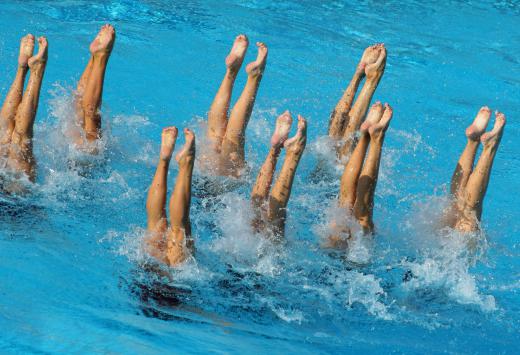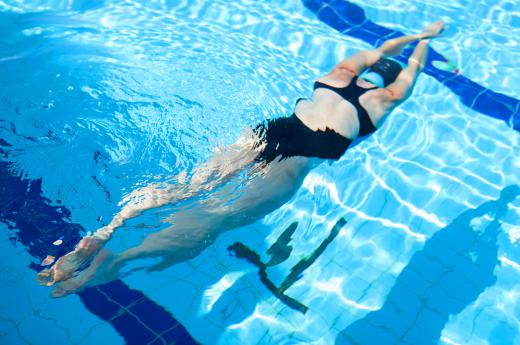Water ballet is the original term for synchronized swimming, a water sport performed primarily by women. Water ballet is categorized by choreographed movements in the water that must be performed with ease and grace. The sport requires flexibility, agility, precise timing, and the ability to control breathing underwater.
Water ballet first began with Annette Kellerman, a woman from Sydney, Australia. She was born on 6 July 1886 and from an early age suffered from rickets, a disease that weakens and softens the bones. In order to fight the debilitating disease, Kellerman spent most of her childhood swimming. Her daily swims caused her to gain strength in her legs and catapulted her to a career that brought her fame.

In 1905, Kellerman performed at the London Hippodrome, a huge performance hall in England. There she performed in a huge glass tank, swimming, diving, and dancing underwater. She brought her act to the U.S. in 1906, enjoying further success. Inspired by Kellerman, a woman by the name of Kay Curtis started a water ballet club at the University of Chicago in 1923.

In 1934, Curtis brought water ballet to the Chicago's World Fair. Soon after, Chicago area schools began to form their own synchronized swimming groups. After World War II, water ballet continued to grow in popularity throughout the world. In the 1940s, Olympic swimmer and movie star Esther Williams cemented the popularity of water ballet by performing in the San Francisco World's Fair Aquacade and several MGM movies.
Eventually, the sport came to be known as synchronized swimming, or synchro. In 1984, synchronized swimming became an official Olympics competition. The 1984 Los Angeles Olympics marked the first time medals were given for athletes who excelled in the sport.
In synchronized swimming, athletes must execute difficult movements in water while making them look simple to perform. Routines are choreographed to music and performed as either a duet or team. In a technical routine, swimmers must perform set movements in a specific order to predetermined music. A free routine is choreographed by the swimmers, with no restrictions on choreography or music. Free routines allow the synchronized swimming team to reveal both its technique and artistry.
Typical routines include spectacular lifts and throws, each member of the team moving in unison as they swim through the water. Two panels of judges score the routines, providing scores based on technical merit and artistic impression. A team can earn up to ten points for a routine.
